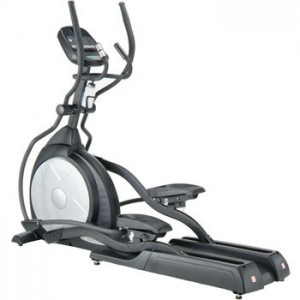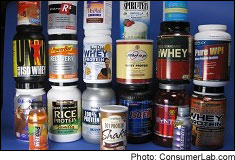
Recent Blog Posts
September 11, 2010
Who Says Coffee is Bad for Your Health?

For all the coffee bashers who continue to perpetrate the idea that a cup of java is health hazard, here is yet another study to refute such assertions. Misik and colleagues (1) investigated the impact of filtered coffee on oxidative damage. 38 subjects were given either 800 ml of coffee or water for five days using a crossover design (meaning subjects received both conditions). The results? Coffee gets a big thumbs up, reducing formation of oxidized purines (a marker of DNA damage) by 12.3%. Researchers concluded that “coffee consumption prevents endogenous formation of oxidative DNA-damage in human.” These findings are consistent with other research. Better yet, evidence suggests benefits can be seen with as little as a single cup of coffee a day.
Understand that coffee is a rich source of antioxidants, which help to fight free radicals that can damage bodily tissues. Scientists are just beginning to explore the many health-related benefits that coffee may confer. The belief that it is detrimental to wellness when consumed responsibly is clearly misguided (excluding a limited number of people who may be contraindicated from consuming caffeinated beverages as advised by a physician).
Also, let’s put to rest the contention that caffeine is a diuretic that will leave you dehydrated. In an extensive review on the subject, Maughan and Griffin (2) found no evidence that caffeine had a negative effect on fluid balance. The authors went on to conclude that the overwhelming body of research offers “no clear basis for refraining from caffeine containing drinks in situations where fluid balance might be compromised.”
Stay Fit!
Brad
1) Mišík M, Hoelzl C, Wagner KH, Cavin C, Moser B, Kundi M, Simic T, Elbling L, Kager N, Ferk F, Ehrlich V, Nersesyan A, Dušinská M, Schilter B, Knasmüller S. Impact of paper filtered coffee on oxidative DNA-damage: Results of a clinical trial. Mutat Res. 2010 Aug 13. [Epub ahead of print]
2) Maughan RJ, Griffin, J. Caffeine ingestion and fluid balance: a review. Journal of Human Nutrition and Dietetics 16(6): 411–420, 2008.
September 1, 2010
Training Frequency on A Split Routine
This morning I overheard a guy in the gym justifying that, since he performed a split routine that worked different muscle groups each session, he was able work out everyday. It’s a claim that I hear a lot. It’s also misguided. While you can get away with increasing the frequency of your workouts for short periods of time (I often do this when training elite fitness and figure competitors for a show), extended periods of continuous training without allowing for recuperation are bound to lead to overtraining, regardless of the training split.

First a little background info: Overtraining is the product of performing too much strenuous physical activity. The exact threshold for overtraining, however, varies from person to person. Everyone responds differently to exercise. Some people can tolerate large volumes of training while others much less. What’s more, factors such as nutritional status, sleeping patterns, hormonal and enzymatic concentrations, muscle fiber composition, and previous training experience all can have an impact on recuperative capacity and, therefore, the point at which overtraining rears its ugly head. But ultimately, anyone and everyone can and will become overtrained if they perform too much exercise.
The idea behind a split routine is to provide an optimal balance of volume and recovery, conceivably helping to stave off overtraining. Some of the more popular training splits include push/pull, agonist/antagonist, and upper body/lower body. When properly implemented, these routines can potentially elicit superior gains in muscular development by permitting more frequent training capacity.
That said, a split routine doesn’t completely isolate muscles to the degree that most believe. You see, during the performance of exercises, there is a synergistic interaction between muscle groups. The biceps, for instance, are integrally involved in the performance of back maneuvers, the shoulders and triceps in many exercises for the chest, and the glutes and hamstrings during compound leg movements. Other muscles function as stabilizers: the abdominals and erector spinae (the muscles of the lower back), in particular, help to provide stability in a variety of upper and lower body exercises, contracting statically throughout each move. The fact is, when a muscle is repeatedly subjected to intense physical stress (even on a secondary level) without being afforded adequate rest, the rate at which mitrotrauma occurs outpaces the reparation process. The end result: impaired localized muscular development. And this doesn’t even take into account the systemic effects of repeated exercise bouts on your neurological system.
To avoid the effects of overtraining, your exercise program must allow for adequate recovery. Don’t succumb to the misguided theory that if a little bit is good, more must be better. By shortchanging recuperation, your body never has the chance to adequately recover from the extreme demands being placed on it. Inevitably, you become grossly overtrained and results come to a grinding halt. With respect to exercise, less can be more!
Although everyone has varying recuperative abilities, a period of about 48 hours is required for adequate recovery between strength training sessions. Research has shown this to be the approximate time for protein synthesis to fully run its course (protein synthesis is the phenomenon where muscles are “rebuilt” from the breakdown that occurs during training). Accordingly, for most strength training protocols, a three-day per week routine is ideal, with training performed on non-consecutive days (i.e. Monday, Wednesday, Friday, etc). This is true even for split routines. In certain cases it can be beneficial to periodize this type of schedule with a four day split, such as a two on/one off, two on/two off schedule (i.e. Monday, Tuesday, Thursday, Friday) if the routine is structured properly. But any more than four days of hard training per week and you begin to risk overtraining when such a schedule is maintained over time. Without question, a seven day a week routine is bound to leave you overtrained.
Moreover, it’s important to make judicious use of your sets. Marathon sessions will only serve to overtax your neuromuscular system and deplete your energy reserves. Even at the highest levels of fitness, large muscle groups generally require no more than nine to twelve total sets while smaller muscle groups need only six to nine; any more is basically superfluous.
Stay Fit!
Brad
August 26, 2010
Fresh or Frozen?

Interesting blog post from the American Council on Exercise titled How much difference is there in nutritional value between fresh and frozen fruits and vegetables?. The article does a good job relating some of the misconceptions about the differences between fresh and frozen produce. Give it a read and you’ll see that, depending on where and when you buy your produce, fresh is not necessarily best.
It also should be noted that the same principles apply to purchasing seafood. Realize that any fish caught at sea is most likely kept frozen on the boat, sometimes for several days. The fish is then defrosted and often spends several more days in transit before appearing on the store display shelf as “fresh” fish. Bottom line: unless you are catching the fish yourself or buying it directly from a fisherman who has just returned to port after a day’s catch, you’re probably better off buying the fish frozen. As with fruits and veggies, frozen fish uses a process of flash freezing at temperatures below 40 degrees Celsius that maximally seals in nutrients. Simply thaw out the fish in the refrigerator a day before you’re ready to cook it and you’ll have a nutritious, great tasting meal!
Stay Fit!
Brad
August 24, 2010
Never Too Old to Exercise!
Here is an inspirational video of a 72 year-old woman, Ernestine Shepherd, who is in amazing shape–not just for a senior citizen, but for someone of any age! Ernestine recently won the Guinness World Record Award for the oldest female bodybuilding champion. She is a true fitness inspiration and reinforces just how beneficial exercise is for everyone, no matter their age.
embedded by Embedded Video
August 22, 2010
Is It Better to Work Out in the Morning?
I continue to hear various fitness pros profess that it’s best to work out first thing in the morning. I’ve heard some go as far as to state that if you’re not in the gym early you’ll miss out on half the benefits of exercise. Unfortunately, none of these “experts” ever provide a shred of peer-reviewed evidence to support their claims.

Fact is, research has failed to show any superiority for working out at a particular time of the day, be it morning, afternoon, or night. A recent study in the Journal of Strength and Conditioning Research reinforces this fact. Subjects were randomly assigned to either a morning or afternoon training group. After 10 weeks, no significant differences were found in muscle development between the groups. Interestingly, the afternoon group actually showed slightly better results, but the findings did not reach statistical significance.
So what’s the real scoop? For all practical purposes, the most important consideration about when to train is to pick a time when you will be at your best. If you’re a morning person, then an early workout will optimize your results. But if you do better in the evening, you’ll only end up sleepwalking through a morning workout. Certainly this will be counterproductive to achieving your best gains. It’s simply common sense that you’d be best off training later in the day.
Bottom line: Don’t be swayed by the hype about morning workouts being best. Let your biorhythms dictate when you work out. Remember, the effort that you put into training will dictate what you get out of it.
Stay Fit!
Brad
Sedliak M, Finni T, Cheng S, Lind M, Häkkinen K. (2009). Effect of time-of-day-specific strength training on muscular hypertrophy in men. J Strength Cond Res. 23(9):2451-7.
August 16, 2010
Upcoming seminars in NYC
I will be giving two seminars this October at Clay Fitness in New York City. Here is a description of topics along with the dates and times:
Monday 10/4/10 2:30-5:30pm: Maternal Fitness: Safe and Effective Strategies for training the Pregnant and Post Partum Client
Exercise is one of the most beneficial things a pregnant woman can do for her body – provided proper guidelines are followed. This workshop teaches you how to address the biomechanical and physiological changes that occur in the pre and postnatal period, and develop sound training programs tailored to the unique needs of the maternal client. Programming for strength training, cardiovascular exercise and flexibility training is covered in detail, with insight provided on how to modify exercise based on the individual needs of the client. Contraindications to exercise are addressed with respect to each trimester.
Wednesday 10/6/10 11am-2pm: Program Design for the Hypertrophy Client
Muscle development is of primary interest to those who lift weights. This workshop will elucidate the science behind optimizing muscular hypertrophy. It will detail the effects of manipulating intensity, sets, repetitions, and rest intervals on growth, as well as exploring the roles of factors such as exercise modality, training to failure, speed of movement, and recovery. The significance of acute hormonal fluctuations and lactate production as to their effects on increasing protein synthesis will be addressed. Sample routines are offered in the context of a periodized approach to help the practitioner with perfecting program design.
The seminars are part of the “Applying Exercise Through the Lifespan” series hosted by Innovative Wellness and are eligible for CEU credit. Below is the link to register. Hope you can make it!
Stay Fit!
Brad
August 15, 2010
Caroline Corley Feature Article
Kudos to my client, superstar radio personality Caroline Corley, who was featured in today’s Journal News (and has now lost over 25 pounds over the past 10 weeks!). Here is the link:
August 12, 2010
Book Signings in Toronto This Weekend
I will be doing two book signings at the CanFitPro Consumer Show in Toronto, Ontario, Canada this Saturday, August 14, 2010. The first signing will be at 11 am at the Human Kinetics booth, and the second signing will be at 12:30 pm at the Chapters Books booth. Look forward to meeting everyone! Here is a link to the event:
2010 CanFitPro International Fitness and Club Business Conference
Stay Fit!
Brad
August 10, 2010
Treadmill or Elliptical Trainer: Which Burns More Calories?
There is a common belief that the treadmill is the best cardio modality for burning fat. This belief seems to be supported by various books and internet sites that post charts showing a greater expenditure of calories associated with the treadmill when compared to similar time spent on alternative cardio modalities.

A recent study by Brown and colleagues (1), however, provides evidence that this might not be the case. Eighteen subjects (9 males and 9 females) were assessed while either exercising on the treadmill or the elliptical trainer. The results might surprise you. Researchers found that when exercising at the same rating of perceived exertion (a measure of how hard one is training), there was no significant difference in the number of calories burned between the two modalities.
Fat burning as it applies to aerobic exercise can be boiled down to two basic factors: intensity (i.e. how hard you are exercising) and duration (how long you are exercising). The key point is that with respect to training intensity, it doen’t matter whether you are running, biking, stair climbing, etc.; provided you are putting in the same relative effort, fat burning will be basically the same.
The take home message here is that if you don’t like to run, don’t force yourself to slog through a treadmill workout in hopes of burning a few extra calories. As long as you train at a comparable level of intensity, the differences in fat burning between modalities will be negligible. Given that the most important aspect of any exercise program is adherence (you can’t get results if you’re not training, right?), you should choose a cardio modality based on your goals and preferences–not because it purportedly burns more fat.
Stay Fit!
Brad
1) Brown GA, Cook CM, Krueger RD, Heelan KA. Comparison of energy expenditure on a treadmill vs. an elliptical device at a self-selected exercise intensity. J Strength Cond Res. 2010 Jun;24(6):1643-9.
August 4, 2010
Consumer Labs Weighs in on Protein Powders

In a previous post, I wrote about the recent Consumer Reports study that found various protein supplements contained potentially unsafe levels of arsenic, cadmium, mercury, and lead. Now comes another study on the subject, this one conducted by Consumer Labs The following three products did not pass the Consumer Labs test:
1) Nature’s Plus Spiru-Tein Vanilla was found to contain 12 grams of sugar as opposed to 8 grams per serving claimed on the label. It also contained 26 more total calories per serving (125 calories versus the 99 claimed on the label), which was attributed to the increased carbohydrate content as well as some additional dietary fat.
2) NutriBiotic Rice Protein Vanilla was found to contain 6 mcg of lead per scoop (18 mcg in the maximum daily serving of 3 scoops) which is considered above tolerable limits.
3) Metagenics® UltraMeal® Rice Natural Chocolate Flavor was found to be contaminated with 5.9 mcg of lead per daily serving.
It should be noted that the products receiving a failing grade were all either soy or rice based, and high lead levels were found exclusively in the rice based proteins. This is understandable given that lead is known to accumulate in rice. All of the whey based protein powders were given “approved” ratings (although Consumer Labs did not test for levels of arsenic or cadmium, which were evaluated in the Consumer Reports study).
As always, remember that supplements are not regulated and quality can be spotty depending on the manufacturer. To help ensure that you get what you pay for, opt for brands that bear the that bear the “USP Verified” seal signifying independent testing for quality, purity, and potency.
Stay Fit!
Brad





 Entries (RSS)
Entries (RSS)



